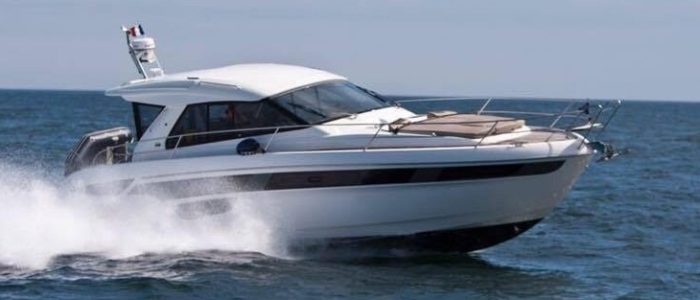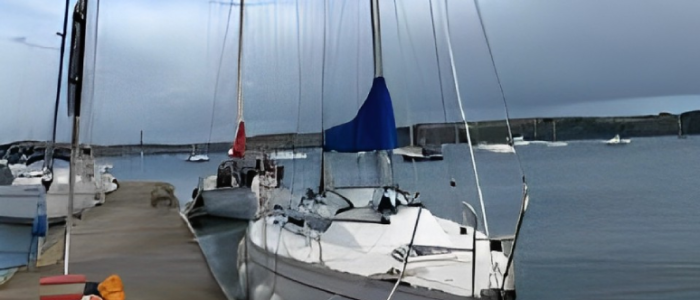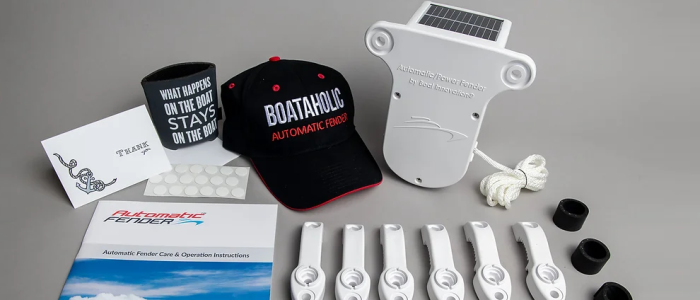In my previous article, I wrote about some of the ‘essential’ toys and add-ons that were necessary for your superyacht. We covered helipads and helicopters, scuba diving, motorised underwater scooters and submarines. As promised, this month at least some (not all!) of the toys I describe are quite sensible and affordable across a very wide range of budgets – so let’s start off with automated fender systems.
Automatic Fender System
These are systems that automatically, at the press of a button (such as on an app), lower the fender to the correct height, Then, when you leave the berth, they raise the fender and store it automatically out of the way.
Are these systems needed?
Of course, at this point, some ‘old sea-dogs’ will be raising their eyebrows as they much prefer to do it the old-fashioned way – by sending their long-suffering crew (often their partner!) onto the bow (no matter what the weather and sea-state) and shouting sometimes fraught instructions. Then, of course, you may have the issue of where to store the fenders themselves. If you are short-handed or single-handed, the situation is worse.
It is obviously not sensible for a single-handed sailor to leave the helm while he or she goes to the bow to deploy the fenders. This is especially true as you are approaching the possibly busy entrance to a harbour or marina with some nice sand-banks strategically placed to trap you. It is not even sensible if you are short handed to use the (single member of the) crew to deal with fenders at a busy time coming into a busy marina. They may be better employed as an extra pair of eyes and for fending off. All this applies to more modest boats or yachts, as well as larger ones.
For a superyacht with several deckhands, coming into port is when they are busiest.
A full automated system could even save the costs of say a single deckhand – with significant savings over the year.
A key point about these systems is that they are used every time you moor and depart the berth – so their ‘cost per use’ is quite reasonable; and the purchase price is broadly similar to the cost of, say, a tender with a small engine.
Yes – just in case you haven’t guessed, I have to declare an interest. We have them on our own boat, and we were so impressed by them, that we now sell them. This has, I am convinced, saved me a fortune in divorce lawyers bills! My wife confirms this…
Slides
OK – let’s get back to playful toys. Having a boat implies a connection with the sea; and a slide from your boat is a great – and playful – way of maintaining that connection. Only to be recommended in calm – and preferably warm – seas and if you can swim.
They are inflatable and certainly are a fun addition to a superyacht. They are attached to one of the upper decks and enable a speedy entry into the water.
They are often custom made for each client. They should have a means of rapid inflation owing to the large volume of air needed and the necessity for a degree of rigidity in the structure. A bicycle pump certainly will not do the trick!
You also need to consider the weight of these structures and need a hoist or similar to lift them out of the water.

Tenders
Almost any size of boat can support a tender – from a small inflatable dinghy to large RIBs with a cabin intended to ferry party guests to and from your yacht. One challenge is where to store them.
It certainly helps if the boat or yacht has a garage (usually in the stern) to store this item. If not, then small tenders – such as inflatables or small RIBS can fairly easily be stored on davits. The two main types are:
Crane types, where the tender is hung from a pair of small crane like structures. For a large yacht, this could be on an upper deck, where the tender can be stored out of the way.
Davits affixed to the stern. These can either be of the pivoting type (‘snap davits’), or the sliding type. With snap davits, the tender is stored on its side and easily pivots into the water, where it can be detached from the stern, and an outboard motor attached. The sliding type usually stores the tender fl at, often covering much of the bathing platform, and you push it out to launch the tender.
The real issue with davits on the stern is simply the space they take up. This is a
real issue if you are mooring stern-to with a modest size bathing platform, as it hinders the way in which the crew can move around from one side of the stern to the other to fend off.
One alternative is to store the tender face down on the bow. Provided that it is lashed down well, this may be viable for a small inflatable. However, it then becomes difficult to deploy (throwing it over the bow rails?); and you must ensure that it does not block any escape hatch from the front cabin.
Truthfully, there is no one ‘best’ solution for all situations. Where and how they are stored is a matter of compromise and space.
Companies such as MasterCraft and Williams make the larger, plusher, tenders that are more appropriate for the true superyacht. These can – and do – cost as much as a small sports cruiser; and are as functional, fast and spacious as one.
Jet Skis
While the purpose of a tender is mainly practical – to transport you from yacht to shore and back; the purpose of a jet ski is almost entirely for fun. They offer speed and a closeness to the water. Consider them as a motorbike for the water.
Perhaps unfortunately, they sometimes have a bad reputation – which is almost certainly due to the rider simply not understanding or following the ‘rules of the road’ and not having consideration for other water users. It should hardly need saying, but you must always wear a buoyancy aid (ideally of 100 Newtons of lift), always attach the kill cord (so the engine stops if – or when – you fall off), and always let people know where you are going and when you are expected back.
Jet skis are available from many manufacturers such as Sea-Doo, Yamaha and Kawasaki. There are many different types, with top speeds ranging from 15 mph to maybe 60 mph – dependent on engine size, weight, overall design and your nerve! Some are stand-up models, designed for one person only. Others are for 2, 3 or possibly even 4 people.
Electric Bikes
Of course, you sometimes want or need to leave your yacht to explore the marina or the country around it. Rather than take a taxi or hire a car, why not store a couple of electric bikes on board?
They don’t take up that much space, especially if they are the folding type. Also, they should be easy to transport to shore if they are compact enough for your tender.
They are also easy to maintain. You don’t even need to go searching for a petrol (‘gas’ to our American friends) garage. Just plug them in to recharge!
A large number of electric bikes are now on the market. Apart from the obvious issue of weight and size, you need to consider the capacity and type of battery and motor. Earlier or cheaper designs of battery may have a limited life span. The choice of batteries is truly confusing, ranging from old-fashioned Lead-acid (SLA) to Nickel-cadmium (NiCd), Nickel-metal Hydride (NiMh), Lithium-ion (Li-ion) Lithium Cobalt (LCO) and Lithium-ion Polymer (Li-pol). Given the advances in battery technology, the best advice is to research them at the time you are buying.
Also, don’t forget that if you are going any distance, or uphill a lot – you will still have to do some pedalling. Sorry about that!
Of course, if you have a mega-yacht, you can really just use the electric bikes to get around your yacht. So much better than walking!
More toys…
It will be admitted that these articles have only touched on some of the additions (aka ‘toys’) you can make to your superyacht or even more humble vessel. Some examples are:
- Spas
- Gyms
- Climbing walls (like the slides mentioned above – only vertical!)
- Objet d’art of various types (which should be chosen for their suitability and robustness on board, not just their aesthetic appeal)
- Amphibian car
- Diving board
- Drones / quadcopters – so that you can recce the locality – but please be very aware of relevant (privacy, aviation and other) legislation in the country you are in and be extremely aware of any sensitivities around military installations or those considered of significant importance including all airports, commercial or private. If in any doubt –don’t!
- Parajets – a motor attached to a wing. For the brave or foolhardy!








